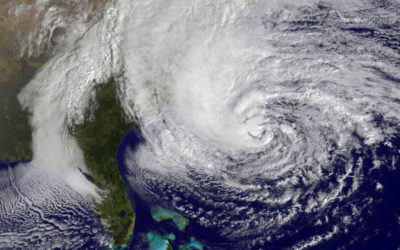
DRaaS is insurance that you don’t know you need–until you need it.
If your business relies on any type of data or digital systems – and nowadays what business doesn’t – then you are already well aware of the necessity of protecting data from malicious threats and natural disasters. This is true no matter what kind of business you have.
If you have a CRM or use ERP software, any type of disaster that occurs at your company’s data centers could leave you without access to critical information. The consequences could be disastrous, particularly at time-sensitive periods like payroll, peak sales season, or an important holiday weekend. We have real-life examples of these ill-timed events in our disaster recovery case studies. They include a manufacturer, financial services, and the critical recovery of a municipal Exchange server.
The danger to your data and ongoing proliferation of ransomware and natural disasters is very real, as are the different kinds of insider threats. While the big news stories tell about the major issues such as global malware or disastrous weather patterns, but in reality, they aren’t the most common and obvious events that can crash your systems and expose your company’s critical information. As the true story below illustrates, one careless and non-malicious employee can compromise company data unintentionally, but with a significant impact.
Before he can get the laptop back, a relieved Bob has to verify some information. That process reassured him the car company contact was legitimate and not an impersonator or bad actor. What do you think Bob did next? He went back to work and never said a word to his boss about his laptop’s missing hours – or that he had given out his personal information that could have been used to hack into it.
Bob’s laptop ended up being the source of a malware infection. The company had proprietary engineering, intellectual property, made different gadgets, and the hacker now had access to all of it.
More DRaaS Articles
What went wrong in the days before Super Storm Sandy?
“Not only were many firms unsure about whether their galoshes were waterproof,” Bart Chilton, the regulator at the Commodity Futures Trading Commission said, “they hadn’t even tried them on.” Chilton’s sharp-tongued critique is in response to the apparent lack of...
Data Center Exposure and Recovery in New York City
Hurricane Sandy provided a fascinating opportunity to study the both the level of disaster planning and the resilience of New York City data centers. This article will examine a) what actually happened, b) what was the risk, and c) what are the lessons learned. What...
Data Protection Audit – Systems, Devices and IT Operations
Your data protection audit lays out the plan that enables you to sleep at night knowing that data loss couldn’t destroy your business or be a costly and burdensome event. In the previous installment of our three part data protection audit series, we looked at the...
Data Protection Audit Planning
In part one of “How to plan and execute a data protection audit,” we discussed the importance of user participation in the design process of your data audit plan. In this installment, we go into more detail about the questions you need to ask about your business...




0 Comments